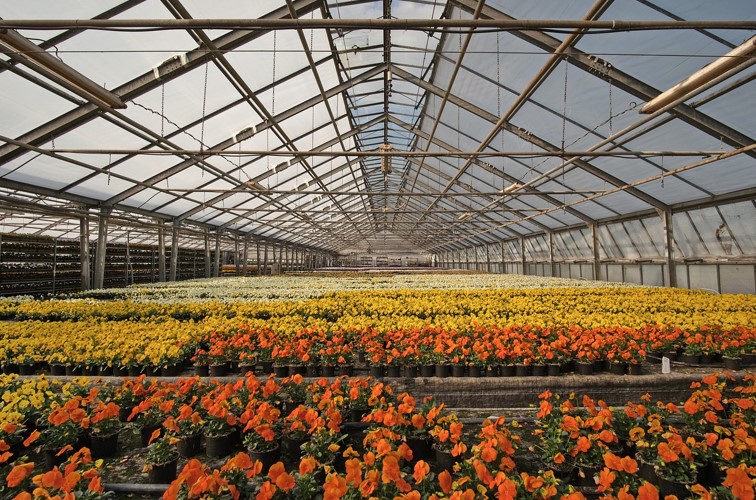If you're looking to enhance the value of your commercial property while promoting sustainability, investing in a greenhouse project can be a strategic move. Greenhouses not only add aesthetic appeal but also offer practical benefits that can attract tenants and customers alike. Here's how you can effectively maximize your property's value through a greenhouse project.
Choosing the Right Type of Greenhouse
Selecting the appropriate type of greenhouse is crucial. Options range from traditional glass structures to modern polyethylene-covered tunnels. For commercial property, innovative greenhouse solutions for businesses can significantly enhance market appeal and sustainability credentials. Evaluate factors like maintenance requirements, climate control capabilities, and the intended use of the greenhouse - whether it's for retail sales, plant cultivation, or as a botanical garden - to determine the most suitable design for your commercial property.
Assessing Feasibility and Planning
Before diving into the project, assess the feasibility of adding a greenhouse to your commercial property. Consider factors such as available space, local zoning laws, and environmental conditions like sunlight exposure. Plan the layout and design of the greenhouse to complement the existing architecture and landscaping, ensuring it integrates seamlessly into the property.
Evaluate Space and Zoning Requirements
Begin by conducting a thorough assessment of your property's available space and local zoning regulations. Determine if your property meets the minimum requirements for installing a greenhouse, including setback distances from property lines and height restrictions. Consulting with a local architect or zoning expert can provide valuable insights into any potential challenges or modifications needed to comply with regulations.
Consider Environmental Factors
Assess environmental factors such as sunlight exposure, wind patterns, and soil quality. These elements play a crucial role in determining the feasibility and optimal location of your greenhouse. Conduct a site analysis to identify areas with the best natural light and protection from strong winds, as well as soil conditions conducive to plant growth. This assessment will help you select the ideal location within your property to maximize the greenhouse's efficiency and productivity.
Incorporating Sustainable Practices
Embrace sustainability by incorporating eco-friendly practices into your greenhouse project. Consider installing energy-efficient heating and cooling systems, using recycled materials for construction, and implementing water-saving irrigation methods. These practices not only reduce operational costs but also appeal to environmentally conscious tenants and customers, enhancing the property's marketability.
Leveraging Educational and Recreational Opportunities
Transform your greenhouse into a multifunctional space that offers educational workshops, community events, or recreational activities. This not only attracts visitors but also establishes your property as a hub for eco-conscious initiatives. Collaborate with local schools, gardening clubs, or environmental organizations to create engaging programs that benefit the community and increase foot traffic to your commercial site.
Offering Educational Workshops
Host workshops on sustainable gardening practices, plant care, or urban farming techniques. Collaborate with local experts or universities to provide certification programs or hands-on learning experiences. These workshops not only educate participants but also position your greenhouse as a valuable resource for community education in environmental stewardship.
Creating Community Events
Organize seasonal events such as plant sales, garden tours, or farmers' markets within the greenhouse space. Invite local artisans, farmers, and food vendors to participate, fostering a sense of community and attracting diverse audiences. By becoming a venue for community gatherings, your greenhouse can cultivate a loyal customer base and strengthen community ties.
Establishing School Programs
Partner with schools to develop educational programs that align with curriculum goals, such as STEM (Science, Technology, Engineering, Mathematics) education or sustainability studies. Provide students with hands-on learning opportunities, field trips, and projects that explore topics like plant biology, ecology, or greenhouse management. Engaging with schools not only enriches educational offerings but also introduces future generations to environmental awareness and career opportunities in horticulture and agriculture.
Marketing and Positioning Your Greenhouse
Effectively market your greenhouse project to potential tenants, investors, and customers. Highlight the benefits such as fresh produce availability, year-round gardening opportunities, or unique event venues. Use digital marketing strategies, social media platforms, and partnerships with local media to raise awareness and generate interest in your property's new green asset.
Monitoring and Maintenance
Once the greenhouse project is operational, prioritize regular monitoring and maintenance to ensure optimal functionality and appeal. Implement a maintenance schedule for structural inspections, pest control, and plant care. Address any issues promptly to uphold the greenhouse's aesthetic appeal and operational efficiency, preserving its value over the long term.
Investing in a greenhouse project for your commercial property offers multifaceted benefits - from enhancing aesthetic appeal to promoting sustainability and community engagement. By carefully planning, implementing sustainable practices, and leveraging educational and marketing opportunities, you can maximize your property's value significantly. Whether you aim to attract eco-conscious tenants or create a unique destination for visitors, a well-executed greenhouse project can position your commercial property as a forward-thinking, environmentally responsible investment.










